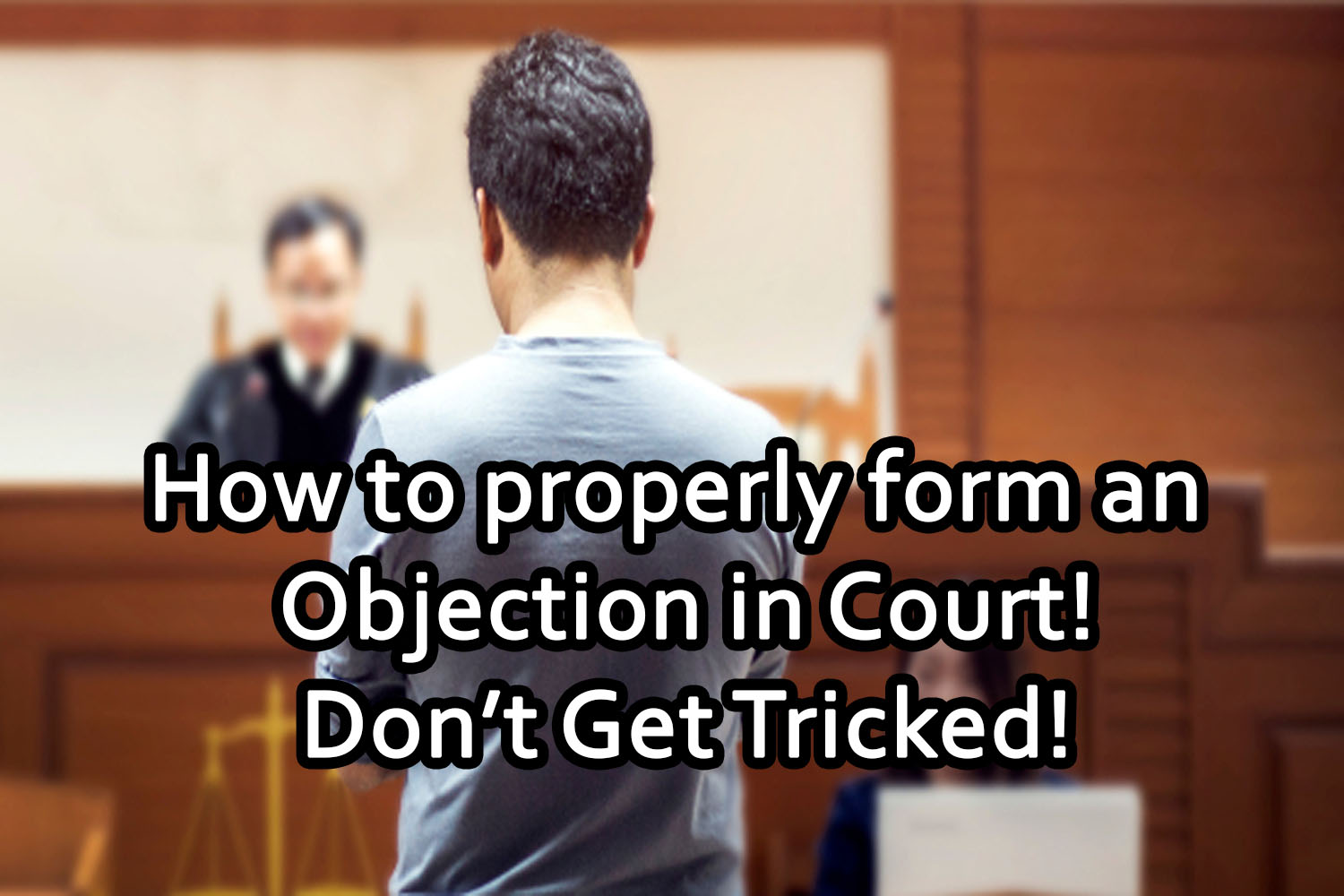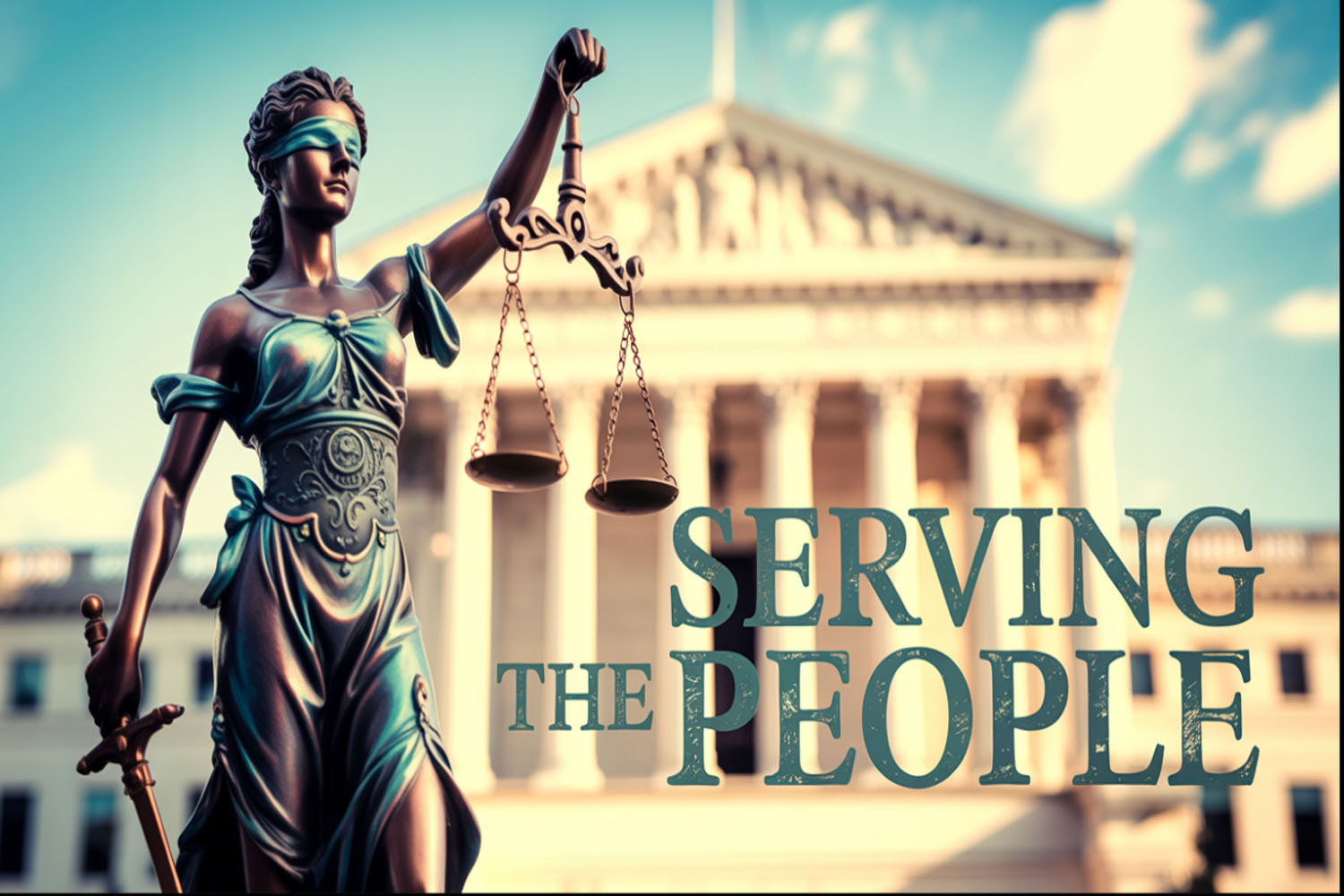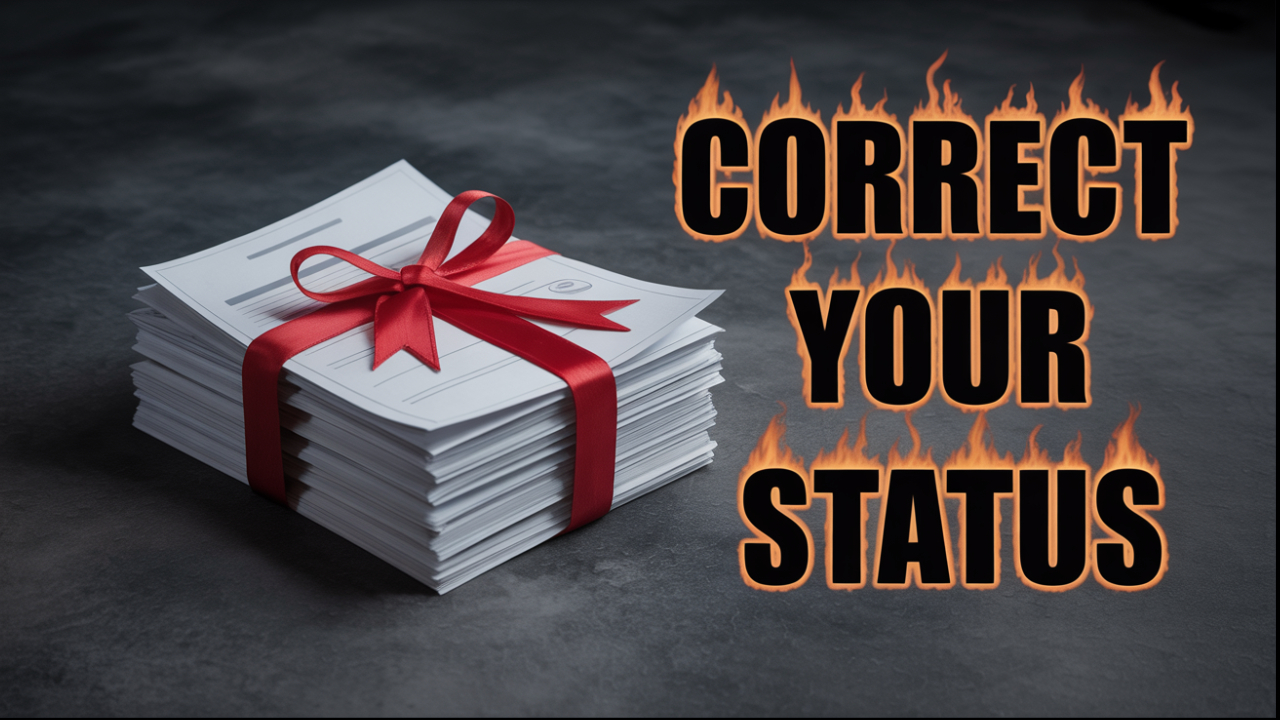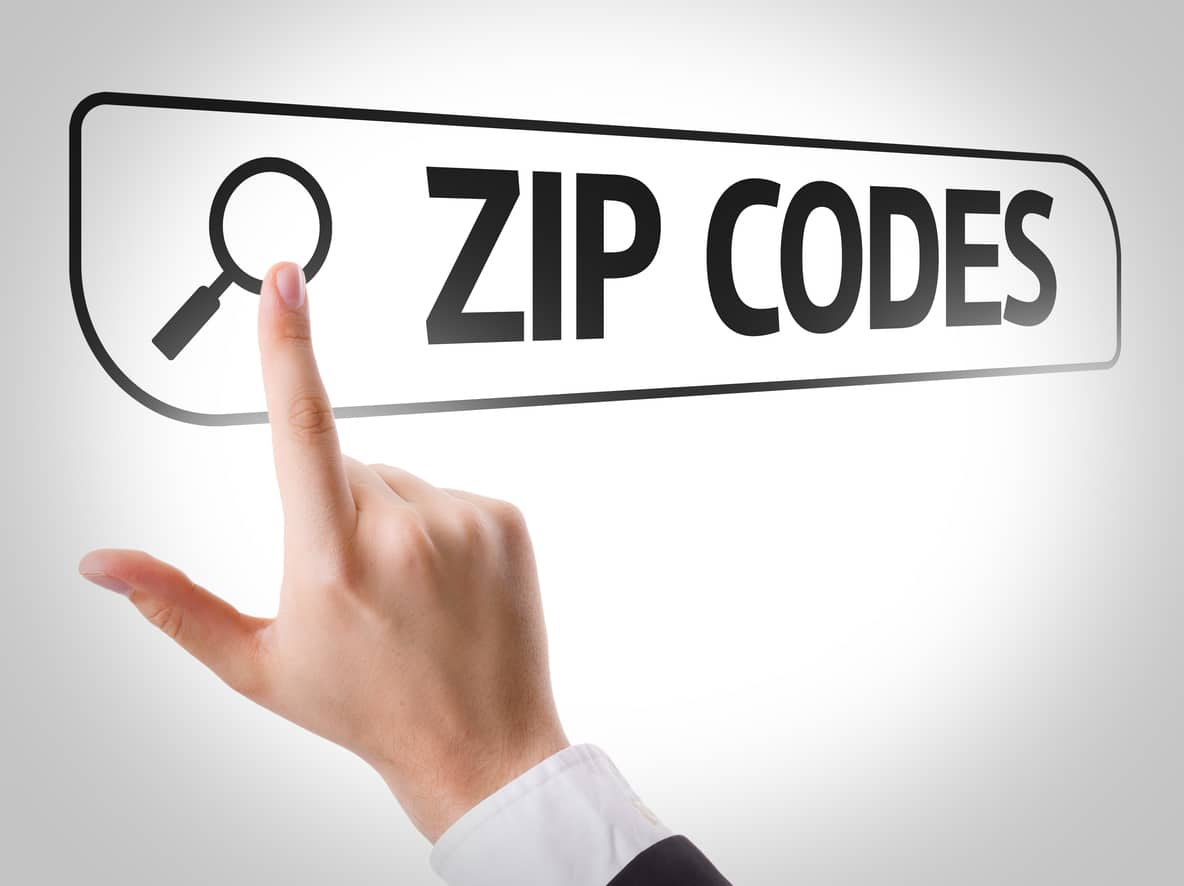Don’t get tricked out of your Rights!
by Yusef El
While this document was written from the experience of a Texan, the information contained applies in all jurisdiction across the country. Cross reference the citations of authority with citations similar in your own jurisdiction.
Navigating the Texas court system as a pro se litigant can be like walking through a minefield. Attorneys and judges, through clever interpretations of the law and court procedures, can and do manipulate the rules to their advantage. This often results in pro se litigants being denied the right to introduce evidence, while the opposing side manages to get hearsay and unsworn statements accepted into the record. Without evidence, you cannot prove your case. While this hardly seems just or fair, fairness and justice are not guaranteed in Texas courts.
Texas courts strictly require pro se litigants to follow all procedural and substantive laws. The court offers no leniency. As stated in In re Caldwell, 918 S.W.2d 9, 10 (1995): “A party acting pro se must comply with substantive law and procedural rules.” If you do not know the rules or how they are used against you, you risk losing your property, your children, your freedom—or all three.
Even if you hire an attorney, you may still end up losing everything; sometimes the only difference is that your lawyer takes your money instead of the opposing party. The Texas justice system can impoverish a person regardless of the verdict. Winning on paper doesn’t always mean you truly win.
The guidelines below are primarily drawn from O’Connor’s Texas Rules: Civil Trials (2001) by Jones McClure Publishing. This resource offers thorough annotations and is invaluable to anyone representing themselves in Texas courts. For best results, consult
UNSWORN STATEMENTS BY ATTORNEYS: HOW THEY BECOME EVIDENCE AND HOW TO STOP IT
Trial courts have wide discretion when admitting or excluding evidence. Appeals will only succeed when there’s a clear abuse of discretion (Rational Liab. & Fire Ins. Co. v. Allen, 15 S.W.3d 525, 527-28).
Although an attorney’s unsworn statements are not evidence (U.S. Gov. v. Marks, 946 S.W.2d 326 (1997)), appellate courts may consider such statements if no objection is raised at trial (Banda v. Garcia, 955 S.W.2d 270, 272 (1997)).
To counter this:
- Immediately object to any factual statements made by an attorney.
You can state the following:
“Objection! Hearsay Your Honor! We need a sworn witness who can testify to the veracity and validity of those documents/statements that council is attempting to proffer into evidence” - Request that the attorney be sworn in and subjected to cross-examination.
- Failure to object waives the right to challenge it on appeal (Fullenwider v. American Guar. & Liab. Ins. Co., 821 S.W.2d 658, 662 (1991)).
If an attorney anticipates becoming a witness in a disputed matter (excluding legal fees), they should recuse themselves from trial representation (Warrilow v. Norrell, 791 S.W.2d 515, 523 n.10 (1989)).
Always insist that a judge issue a clear, on-the-record ruling on all objections. Vague or delayed rulings do not preserve error for appeal (Wal-Mart v. Gonzales, 954 S.W.2d 777, 782 (1997)).
When a judge refuses to rule:
- State explicitly on the record that the court has refused to rule. These are called equivocal rulings, and they should be addressed as follows:
I take exception to the Honorable Judges refusal to rule on my objection. Would the Judge please enter SUSTAINED or OVERRULED into the record so I may preserve the error for appellant purposes?” - Demand that the record reflect your objection to the court’s inaction (Goodchild v. Bombardier-Rotax GmbH, 979 S.W.2d 1, 6-7 (1998)).
Judges are not bound by rules of evidence when making preliminary admissibility decisions, except those concerning privilege (TRE 104(a)). This flexibility can work against the pro se party.
HOW THE COURT PREVENTS YOU FROM ADMITTING EVIDENCE AND WHAT YOU CAN DO
If your evidence is excluded, you must preserve it for appeal through an offer of proof:
- First, offer the evidence at trial.
- If an objection is raised and sustained, you can make an offer of proof.
- The offer should show the substance of the excluded evidence.
Oral Testimony
Make the offer in the judge’s presence (but outside the jury’s hearing). Summarize what the testimony would have been.
Documents
Say: “I make an offer of proof of this document and request it be filed with the record.”
The court reporter must mark and include the document in the record.
Even if the document is already in the court file (like affidavits or depositions), it does not automatically become evidence. You must:
- Introduce it formally at trial.
- Get a ruling if excluded.
- Submit it as part of your offer of proof.
Affidavits must be supported by live testimony to become admissible—unless the opposing attorney references their own affidavits, and you fail to object.
Audio Evidence
Say: “I make an offer of proof of this tape and request it be filed with the record.”
If no transcript exists, ask permission to file one later.
Preserve error by securing a clear ruling that the evidence is excluded. If the judge refuses to rule, object to that refusal and get it on the record (TRAP 33.1(a)(2)(B)).
A final note: judges are reluctant to be reversed on appeal. Properly preserved evidence may compel them to reconsider their rulings.
When appearing pro se or in propria persona (representing yourself in court), objecting to evidence or questions is crucial to ensure a fair and accurate trial. Here’s how to object effectively:
1. Understand the Basics of Objections:
- Why object?
Objections prevent the admission of inadmissible evidence or the use of improper questioning techniques.
- Types of objections:
Common objections include hearsay, leading questions, irrelevant evidence, and lack of personal knowledge.
- The judge’s role:
The judge will rule on your objection, either sustaining it (agreeing with your objection) or overruling it (disagreeing with your objection).
2. How to Make an Objection:
- Stand up: As a sign of respect to the court, stand up when you want to object.
- State your objection: Clearly and concisely state the reason for your objection.
- Examples: “Objection, hearsay” or “Objection, leading question”.
3. Common Objections and How to Use Them:
- Hearsay: Evidence based on someone’s out-of-court statement, used to prove the truth of the matter asserted.
- Leading question: A question that suggests the answer it seeks.
- Irrelevant evidence: Evidence that does not relate to the case.
- Lack of personal knowledge: A witness is not qualified to testify about something they did not experience firsthand.
- Speculation: A witness’s answer calls for speculation or guesswork.
- Ambiguous: A question or answer is unclear or open to multiple interpretations.
- Asked and answered: A question that has already been answered.
- Unresponsive: A witness’s answer does not address the question.
4. Key Considerations When Objecting Pro Se:
- Know the rules of evidence: Familiarize yourself with the basic rules of evidence.
- Don’t interrupt excessively: Avoid interrupting the witness or opposing counsel unnecessarily.
- Be polite and respectful: Maintain a professional demeanor throughout the proceedings.
- Don’t show emotion: Refrain from getting upset or argumentative.
- Don’t argue with the judge: If the judge overrules your objection, accept their ruling and move on.
- Consult with a legal resource: If you’re feeling overwhelmed, consider consulting with a legal aid organization or pro bono lawyer.
By understanding the basics of objections and following these guidelines, you can effectively represent yourself in court and ensure that your case is presented fairly.
CONCLUSION
Evidence is everything. If your evidence isn’t on the record, you don’t have a case. But if you can prevent the opposing attorney from submitting hearsay or unsworn statements—and if you properly preserve your own excluded evidence—you give yourself a fighting chance. Mastering the rules may be the only path to justice for the pro se litigant.
This is not legal advice. For legal guidance, consult a competent, trustworthy attorney—if you can find and afford one. Otherwise, your best hope is preparation and a deep understanding of the rules that govern the courtroom.
Yusef El







